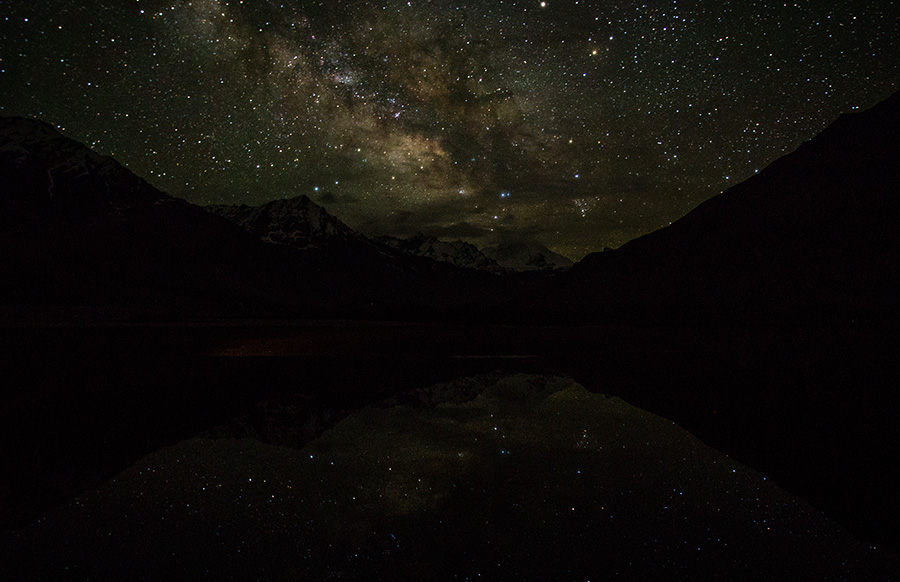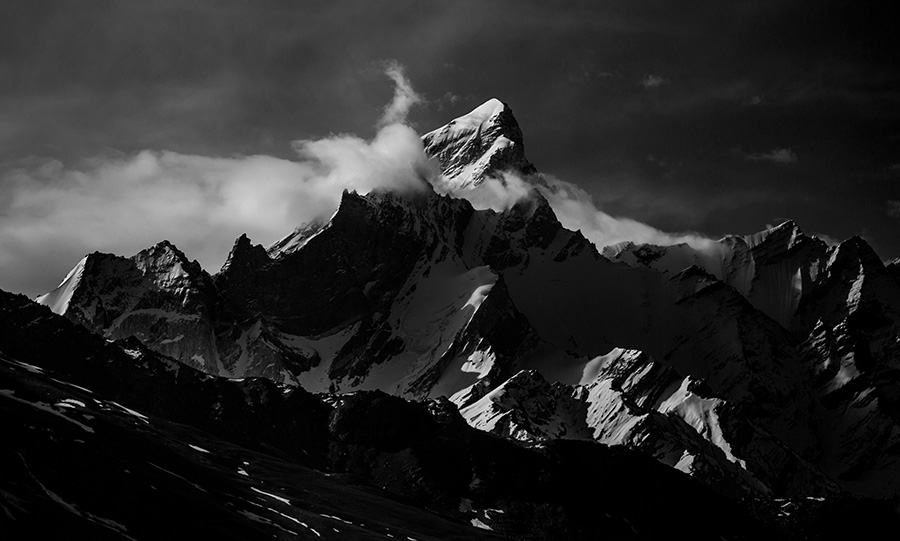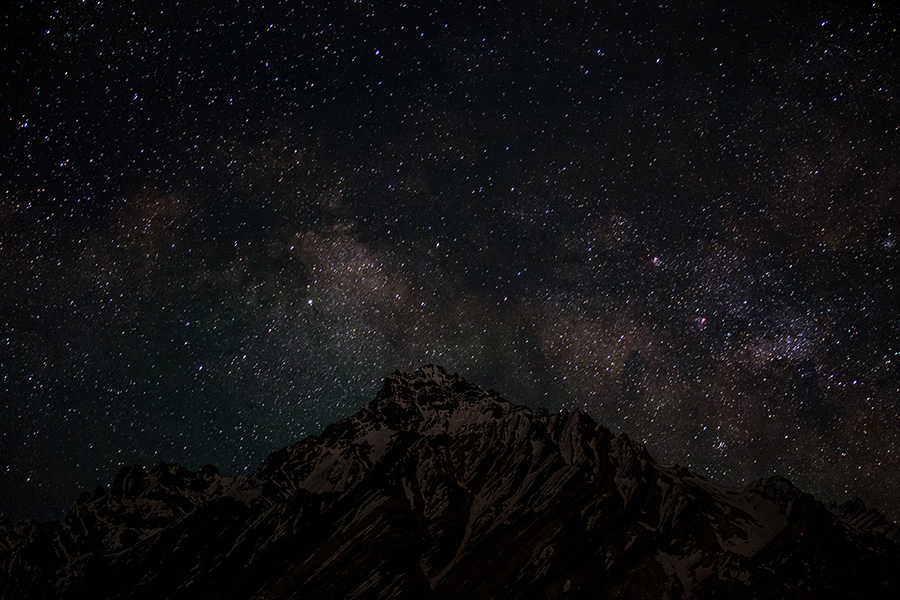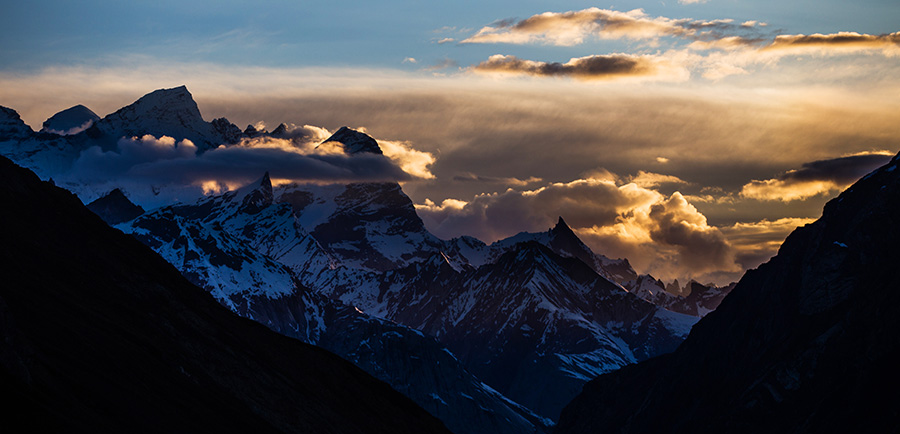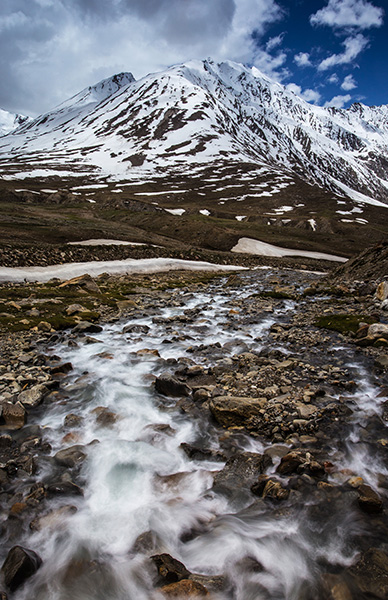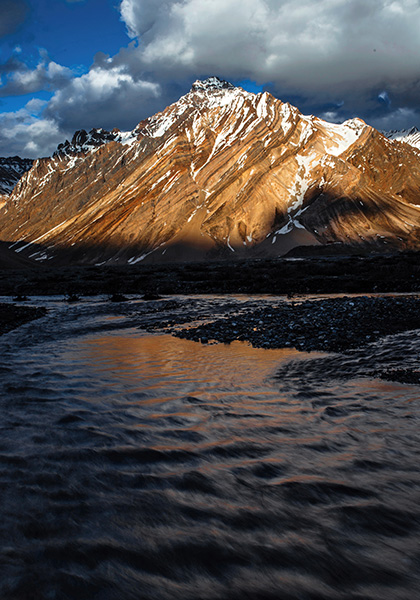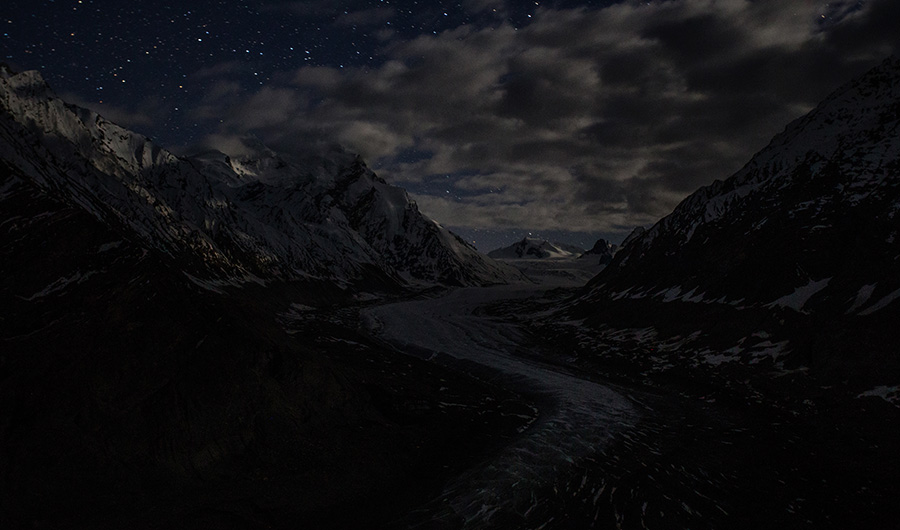Zanskar – brilliant star-lit mountain landscapes in the Himalayas
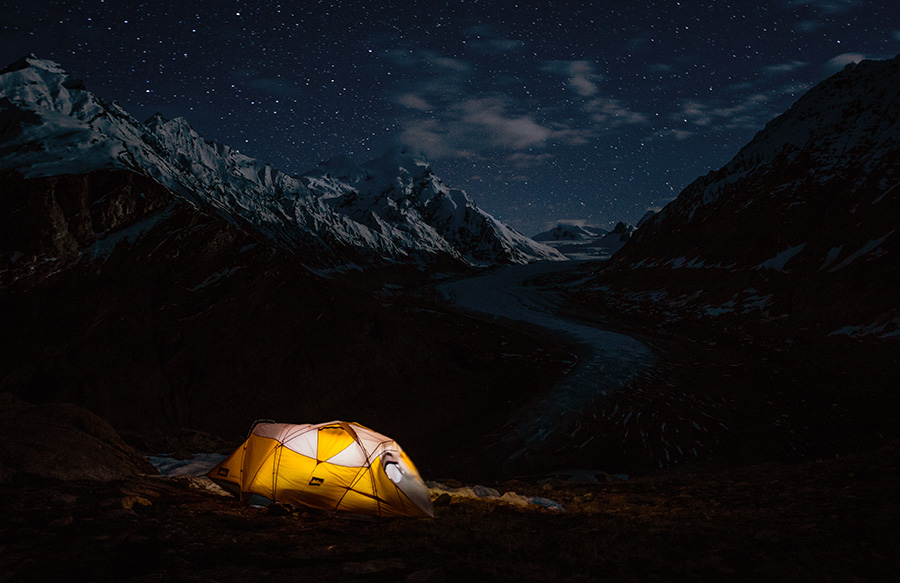
As we drove higher and higher–well above 12,000 feet–there was a visible change in the geographical features. The brown slopes of the mountains that adorned a hat of snow on the peak morphed into all-white walls bifurcated by a rough patch of road that allowed us an access. Below us, at the bottom of the valley, melt-water gushed away, making a long journey into the plains that nurtured the civilization of a billion people. Up here, the only sound of life came from the inhabitants of our own car, save for an occasional yellow-billed chough that flew past or a cuddly-looking marmot that scooted away on our arrival. Glaciers dotted the landscapes, adding more force to the river that skirted past their mouths. The enormous tall massifs covered with snow hurt our eyes, and yet, pleased our souls through a sense of calm and magnanimity effused from them. Someone in the car said, “we have reached heaven”. I could not help but nod silently. I did not want to speak up and break the indulgent muses of my mind.
It was a summer afternoon and we were driving towards Penzi-La, the mighty pass that rose above 14,000 feet to partition the valleys of Suru and Zanskar. I was leading a photography tour comprising a dozen trigger-happy people who were willing to go through any struggle to be a part of this gigantic landscape. For past three days, we had come away from the networked world and were camping amidst high mountains, disconnected from everything else but the grandest showcase of nature. We had traversed in the shadow of Nun and Kun mountains, both massive projections from the ground that climbed well above 20,000 feet, covered in megatonnes of snow that shined in the bright mountain sun.
In our first campsite, which was located just inches below a magical 10,000 feet altitude mark, we had had our first glimpse of heaven. It was a large open ground–something you don’t see often in these mountains–with a think carpet of grass located at a stone’s throw away from the fast-flowing Suru River. Faraway to the south-west, the horizon was defined by the white twin peaks and their neighbours decorated with a sprinkle of snow. As we arrived here, the sun shined brightly, a gentle breeze brought in more freshness to the already pristine space and the day was just perfect. But it was the night we were actually waiting for.
After setting up our camp and exploring the neighbourhood, we quickly settled down to rest and wait for the sun to move towards the horizon. It would be a long night for us–first of the many to come–as we watched last rays of the sun shining over the icy peaks. By this time, our cameras were all setup on the tripods, aimed towards Nun and Kun, waiting for the drama to unfold.
The photography-activity picked up with the setting sun and reached its highs late in the night. A few hours later, after a delicious dinner in the warmth of our dining tent, we were still out with our cameras aimed at the high peaks. The moonless sky was now splattered with a million stars that twinkled over the peaks. As the night progressed and the skies became darker, the long stretch of Milky-Way’s star-dust emerged in the east and slowly made its way towards the west. In the silence of the mountains, the universe smiled at our cameras and bared its secrets that is rarely on display anywhere else.
The next four days were a clockwork repetition of the first. In the mornings, we would dismantle the tents and move higher up the mountains, desirous of more exciting views and yearning to be closer to the high peaks. Suru and Zanskar Valleys did not disappoint. On the second day, we had the privilege to sleep in the premises of a gigantic glacier emerging from Nun’s slopes. The peak of Kun was so close to our dwellings today that when we peeked out from the tent, it needed craning the neck to be able to see the summit.
On the third day, we camped out at a huge marshland with sections of dry grassy plains. We had now traversed around Nun and Kun, and had moved from the west of the mountain to the eastern side. It was meant to be our lucky day, as a spattering of clouds enhanced the sky at the sunset hour and created a drama that was etched in our hearts and the cameras. Blobs of moisture hovered around Nun and Kun, reflecting the evening light and glittering the mountains in an orange glow.
We did not think it could get better than this, but we had to wait only one more day to drive through landscapes that we would never have imagined even in our dreams. Driving up to Penzi-La pass, our road was engulfed by massifs of snow in every direction. Streams ran all around the slopes making the mountains feel alive and breathing. Each curve led us to a new landscape that we could never imagine, making us stop every other minute to take in the beauty of the earth in a bridal wear.
Up on the pass, a lake, its surface covered in thin ice glistened like prism in countless number of colours as it reflected the powerful mountain sun. As we left the pass behind and descended into the valley of Zanskar, we gasped at the sight of our ultimate destination – Drang Drung Glacier. It’s a huge river of ice, curving gently in an ‘S’ shape like any river would, during its descent from the peaks. On either side of it, mountains reached up to the sky and dwarfed everything else in the landscape. Tonight, our camps would be on a ridge facing the glacier, our tents opening up to the flow of ice. I hadn’t spent a night in a place this exciting ever.
That night, in the gentle moonlight that dispersed over the mountains, we setup the cameras on the ridge and pointed them into the curve of the glacier. Stars twinkled in the sky, often reminding me how vast and ancient the universe is. A cold breeze blasted from the west, often numbing our hands and freezing our faces. But the cold did not matter in the grandeur of the setting we stood on. The freezing cold, the unforgiving altitude and the harsh weather did not matter. We had indeed found heaven. Perhaps it was outside, in the majestic formation of the glacier under the stars. Or perhaps it was inside our hearts, awakened by the brilliance outside.

